Miners in Bosnia and Herzegovina (BiH) increasingly seek their rights through street protests, questioning whether miners and mines are still needed by the state. Clear answers from officials on these questions have yet to be heard publicly. In line with decarbonization and energy and climate plans, the closure of thermal power plants (TPs) and mines is expected. The exact timing of these closures has not been publicly announced.
For years, officials and institutions in Bosnia and Herzegovina have ignored the commitments and the path taken by the European Union (EU), thus losing valuable time while stubbornly convincing the public of a bright future based on projects that failed and became outdated before they even started.
According to information obtained by Valter, a decrease in market competitiveness, a reduction in exports to the EU, an increase in electricity prices—especially for households that have so far been subsidized by exports—and ultimately a drop in economic activity levels that would threaten employment and salary levels in BiH are just some of the expected scenarios from January 2026, when greenhouse gas emission taxation will begin.
“The problem is that the public has been fed the idea that we are the largest electricity exporters in Europe, that this is our future, without mentioning that this is based on coal and that coal is a declining industry in Europe and the world”, says Mirza Kušljugić, PhD in Electrical Engineering, professor at the Faculty of Electrical Engineering in Tuzla, and president of the Board of the Center for Sustainable Energy Transition (ReSET), to Valter.
TEN LOST YEARS
While China and the EU announce accelerated reductions in greenhouse gas emissions and transitions to energy systems dominated by solar and wind power, the energy transition in Bosnia and Herzegovina (BiH) stands on shaky ground with failed and outdated projects based on partnerships—particularly with China.
“The largest post-war investment in BiH”, as described a decade ago by then Foreign Minister of BiH Zlatko Lagumdžija during a working meeting in China, referring to the construction project of Block 7 at the Tuzla Thermal Power Plant (TPP), has not materialized to this day. At that meeting, it was concluded that Block 7 in Tuzla “could and should only be the beginning of further and greater Chinese investments in BiH”.
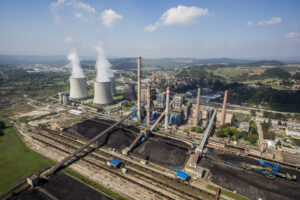
Over the past years, numerous energy projects were negotiated and contracted, mostly with Chinese financiers, and were declared significant public investments. These projects were supposed to cover the expected electricity deficits after the closure of existing thermal power units. However, these projects have resulted in nothing more than public stories over the years, labelled as big, biggest, and most important, about which institutions remain silent today.
“We have lost ten years. This phenomenon in Elektroprivreda BiH (EPBiH) is called Block 7, which was supposed to solve everything. So, when you have a project on which you thought everything would be resolved, and that project fails, you are left stranded”, explains Kušljugić.

The Block 7 TPP Tuzla project has become a classic example of the conflict between Chinese-supported investments and the standards required by the EU.
In the past 19 years, since the signing of the Energy Community Treaty, BiH has undertaken numerous obligations that it was supposed to implement. Now, institutions will have to rapidly work on implementing these obligations to maintain the security of electricity and heat supply and reduce the negative impacts of the transition on citizens and the economy.
One of the key obligations is the decarbonization of the energy sector, which entails reducing greenhouse gas emissions from energy sources using fossil fuels and transitioning to cleaner, renewable energy sources (RES), all to mitigate the negative impacts on climate change.
“The most crucial current issue is related to this tax that will start being charged from 2026. It has somehow been completely sidelined, but it will significantly impact the economic segment of our country, especially the export sector”, says Faruk Hadžić, Dean and Professor at the Sarajevo School of Science and Technology.
On average, 60% of electricity in BiH is produced from fossil fuel-based TPPs, which contribute to high greenhouse gas emissions. From January 1, 2026, BiH businesses will have to pay a CO2 tax when exporting products to the EU that are produced using coal-based energy, in accordance with the Carbon Border Adjustment Mechanism (CBAM) regulation.
“This will ultimately lead to a decrease in exports. And if exports decrease, the level of economic activity decreases. This will again jeopardize employment and salary levels in BiH for existing workers. So, in that regard, the situation is not good”, says Hadžić.

MONEY FOR DOMESTIC DEVELOPMENT OR THE EU BUDGET
Years lost on public stories about new thermal power plants (TPPs) and blocks, announcements of contracts with Chinese financiers worth billions of BAM, coupled with insufficient dedication to the issues of production and consumption from renewable energy sources (RES), have led Bosnia and Herzegovina (BiH) into a situation where it must revive and invest in the operation of old thermal units to maintain supply security. The introduction of mandatory CBAM tax payments will further burden this sector, as well as all other exporters.
For every ton of CO2 emitted in the production of goods, exporters to the EU will pay a certain amount, with current tax prices in the EU around 85 euros, expected to rise. Penalties are also planned for each ton of unreported emissions. Estimates suggest that producing one megawatt-hour from fossil fuels releases one ton of CO2, meaning that CBAM will almost double the price of electricity from coal-fired TPPs, making it uncompetitive in the market.
“One megawatt-hour roughly costs about 50 euros on the stock markets, now it costs around 80 euros, and our TPPs need to emit one ton of CO2 to produce one megawatt-hour, and they would need to pay around 70 euros by European prices—so, the production cost would double, it would be twice as high”, explains Kušljugić.
In the first phase, CBAM covers high-carbon-emission sectors—iron and steel, cement, fertilizers, aluminium, hydrogen production, and electricity, and will gradually expand to other sectors.
To avoid the application of the CBAM tax, BiH should establish domestic taxation similar to the EU Emissions Trading System (ETS) by the end of December next year.
“When we talk about state institutions, the urgency and importance of introducing the ETS system was not timely understood. Only recently have the relevant institutions started to engage more intensively with this issue. On the other hand, EPBiH has been warning the relevant ministries about this need for the past three years and eventually initiated an internal CO2 emissions taxation scheme to be as prepared as possible, with knowledge and capacities, for the period ahead”, says Dr Anes Kazagić, head of the Strategic Development Sector at EPBiH, to Valter.

The key document defining BiH’s energy and climate goals until 2030 is the Integrated Energy and Climate Plan (NECP), currently in draft form. According to the Ministry of Foreign Trade and Economic Relations (MVTEO), it is expected to be adopted by the end of the year, requiring over 16 billion KM for its implementation.
The NECP states that an ETS system will be introduced in BiH by 2026, while the MVTEO mentions the end of 2026 as the deadline for implementing this taxation system.
“Now, whether we will manage, you know that nothing here is simple given the complexity of the state, it is not easy to implement all the obligations and meet deadlines, but we hope we will succeed”, says Admir Softić, Assistant Minister at MVTEO.
Funds collected from ETS would remain in BiH and be used for development projects of renewable energy sources and achieving decarbonization goals, while in the case of CBAM, the money would go to EU countries. The MVTEO conducted an impact analysis of CBAM and ETS on six sectors in BiH—steel, iron, cement, fertilizer, aluminium, and electricity. According to MVTEO, the analysis showed that electricity is the most sensitive industry in BiH to the application of both CO2 taxes. The cement industry will be under significant CBAM pressure, while the aluminium industry is the most resilient to CBAM application as it loses the least revenue.
“Considering the spillover effect that electricity can have on other industries and households through increased selling prices on the local market, economic stability will be the main concern in the coming years”, says MVTEO.

In the NECP, it is stated that the introduction of CBAM would have a significant impact on the thermal energy sector in BiH, with about 50% of production from thermal power plants being exported. The analyses indicated that “it is essential to make efforts to avoid the introduction of the CBAM mechanism as it is extremely unfavourable for the domestic economy”, and that there should be a rapid move towards introducing the ETS model in BiH.
Timely establishment of ETS, as Kazagić says, “would be much wiser and economically more beneficial for the state and all economic participants, compared to the transitional ‘penal’ variant with CBAM”.
However, the MVTEO claims that analyses show that for BiH in the initial phase, “the best solution is the gradual introduction of ETS, alongside the effects of CBAM”.
“It is important to differentiate that CBAM taxes only the goods exported, while ETS taxes all goods produced in the country”, says the ministry.
They state that their analyses show that through the CBAM mechanism, BiH would contribute about 1.3 billion KM to the EU budget and annually lose about 800 jobs, while full implementation of ETS would allow BiH to collect, or rather, retain about 3 billion KM in the domestic budget, with an annual loss of 1,400 jobs. By combining CBAM and ETS, BiH would retain about 290 million KM annually, while about 380 million KM would go to the EU.
“GREAT” PROJECTS WITH CHINESE PARTNERS
In 2005, by joining the Energy Community, BiH committed to implementing EU directives, such as those on limiting harmful emissions and using energy from renewable sources. It was already known then which direction the EU’s energy and climate policy was heading and what was expected of all member states and those aspiring to membership.
Five years later, the Government of the Federation of BiH declared the construction of energy facilities as a public interest to “secure long-term electricity supply for domestic needs” and “cover the deficits that will arise from the shutdown of existing thermal blocks”. These facilities included: TE Tuzla Block 7, TE Kakanj Block 8, TE Kakanj Combined Cycle, RiTE Bugojno, RiTE Kongora, RiTE Banovići, HE Ustikolina, HE Vranduk, HE Unac (Rmanj Monastery), CHE Vrilo, CHE Kablić, HE Kruševo with HE Zeleni Vir, HE Vrhpolje, HE Glavatičevo, HE Bjelimići, HE Čaplje, HE Han Skela, HE Vinac, HE Babino Selo, HE Ugar Ušće, HE Vrletna Kosa, HE Ivik, PHE Bjelimići, VE 1 Podveležje, VE 2 Podveležje, VE Borova Glava (Livno), VE Mesihovina, VE Velika Vlajna, and VE Poklečani.
Most of these projects have not materialized even 14 years after this decision, with the focus over the years mainly on thermal energy projects.
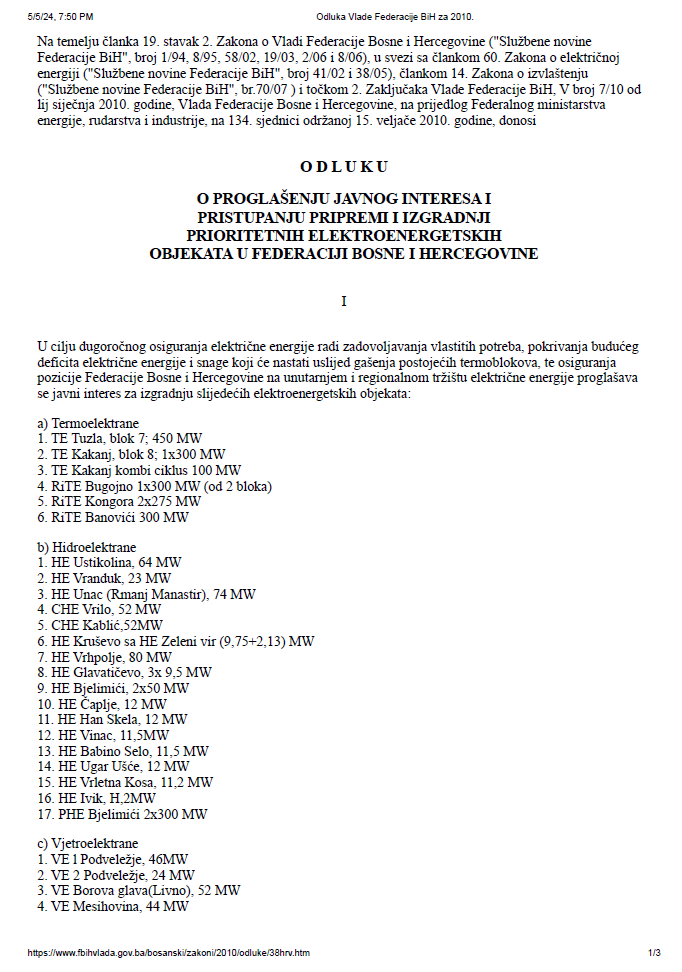
Following Lagumdžija’s meeting with the Chinese in 2014, numerous meetings ensued between BiH officials at various levels and Chinese representatives, discussing future cooperation and investments in the energy sector, particularly focusing on thermal power plants. The Block 7 project in Tuzla was highlighted as the most important investment.
In March 2016, during a visit to Tuzla Mayor Jasmin Imamović, Chinese Ambassador Chen Bo stated that Block 7 would be built according to the “highest environmental, European, and even global standards and modern technologies”. The same year, she met with then Presidency member Bakir Izetbegović to discuss Block 7 and TE Banovići.

At the summits of the 16 prime ministers of Central and Eastern European countries with the Chinese Prime Minister in 2016, 2017, and 2019, then Chairman of the Council of Ministers Denis Zvizdić stated that the Block 7 project was in its “final phase”.
OLD BLOCKS AS “ALTERNATIVE”
Alongside Block 7 of the Tuzla Thermal Power Plant, presented as exceptionally important yet never realized projects worth billions of BAM in this sector, other mentioned projects included Block 8 of the Kakanj Thermal Power Plant, the Banovići Thermal Power Plant, the Kongora Thermal Power Plant, the Zenica Thermal Power Plant, Ugljevik 3, and Gacko 2 in the Republika Srpska entity.
All of these projects were negotiated or contracted with Chinese partners such as Gezhouba Group and Guangdong Electric Power Design Institute, China National Electric Engineering Corporation Beijing, Dongfang Electric Corporation Limited, Industrial and Commercial Bank of China, Exim Bank, North China Power Engineering, SEPCO III, China Electric, and Sunningwell International LTD.
EPBiH did not respond to Valter’s inquiries about the future of Block 7 of the Tuzla Thermal Power Plant, which has been announced as the most significant project since 2006 and heavily relied upon for the transition, nor did they disclose the amount invested in this unrealized project or why both this and Block 8 in Kakanj were dependent on Chinese partners.
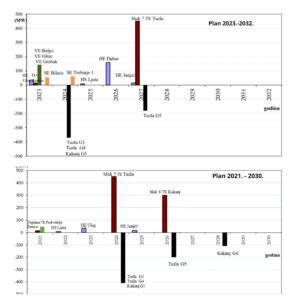
While in one part of EPBiH’s response, they use the term “delay in the implementation of Block 7”, Softić tells Valter that they have definitely abandoned Block 7.
Kušljugić adds that there is nothing left of any new coal-fired blocks.
“There’s no one left to supply equipment. The problem will be maintaining existing equipment because, regardless of what the media say, Germany, Poland, and everyone else is phasing out coal by 2030, at the latest by 2035. It’s over. And when you don’t have power plants, who will make spare parts and maintain them for you?” Kušljugić says.

The fact is that with the non-realization of Block 7, EPBiH has been left without an alternative, so the supply now relies on old blocks that should have already been decommissioned. In February 2022, EPBiH requested an extension of the operation of these blocks from the Government of FBiH in order to “ensure a secure and reliable supply of electricity and thermal energy”.

According to EPBiH’s statement to Valter, investments will be made for the modernization of operations and environmental adaptation of these blocks, “which is in line with energy transition”.
NECP envisaged the shutdown of around 400 MW from thermal blocks by 2030, with the aim of their complete shutdown by 2050.
A NEW OLD STORY ABOUT HYDROPOWER PROJECTS
As early as 2005, Bosnia and Herzegovina began an expansion of small hydropower plants aimed at increasing renewable energy sources. However, these projects have mostly generated significant profits for private entities with minimal benefit to the state and environmental damage. In recent years, there has been public opposition to such projects. Now, Bosnia and Herzegovina is entering into new plans and projects for renewable energy sources to fulfil its obligations.
EPBiH states that the most significant investments in the transition process are currently the modernization of thermal units in Tuzla and Kakanj, financed from their own funds, while “investment cycles in new capacities for renewable energy sources are also underway in parallel”. However, they did not specify concrete projects or their financing methods.
Hadžić mentions that besides money, new projects will require a considerable amount of time, so thermal power plants will have to be used for some time due to the lack of alternatives.
NECP now predicts a doubling of installed capacities from these energy sources. There is a planned significant increase in electricity production from hydro potential, although no major hydroelectric power plants have been built in the last decade, and construction of small hydropower plants up to 10 MW has been banned in the FBiH following public pressure.
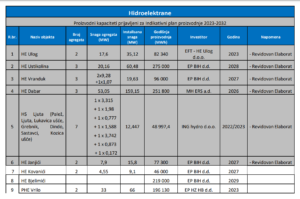
Furthermore, financing for these projects is becoming scarcer as European banks, as well as the German Development Bank, are more cautious regarding this type of investment, leaving Chinese financiers and Chinese influence as an option again.
However, Kazagić says there is increasing awareness in European economic and financial circles that investing in sustainable hydropower will be an option for a faster transition, but he did not answer whether these projects will also rely on Chinese partners, as is the case in the Republika Srpska.
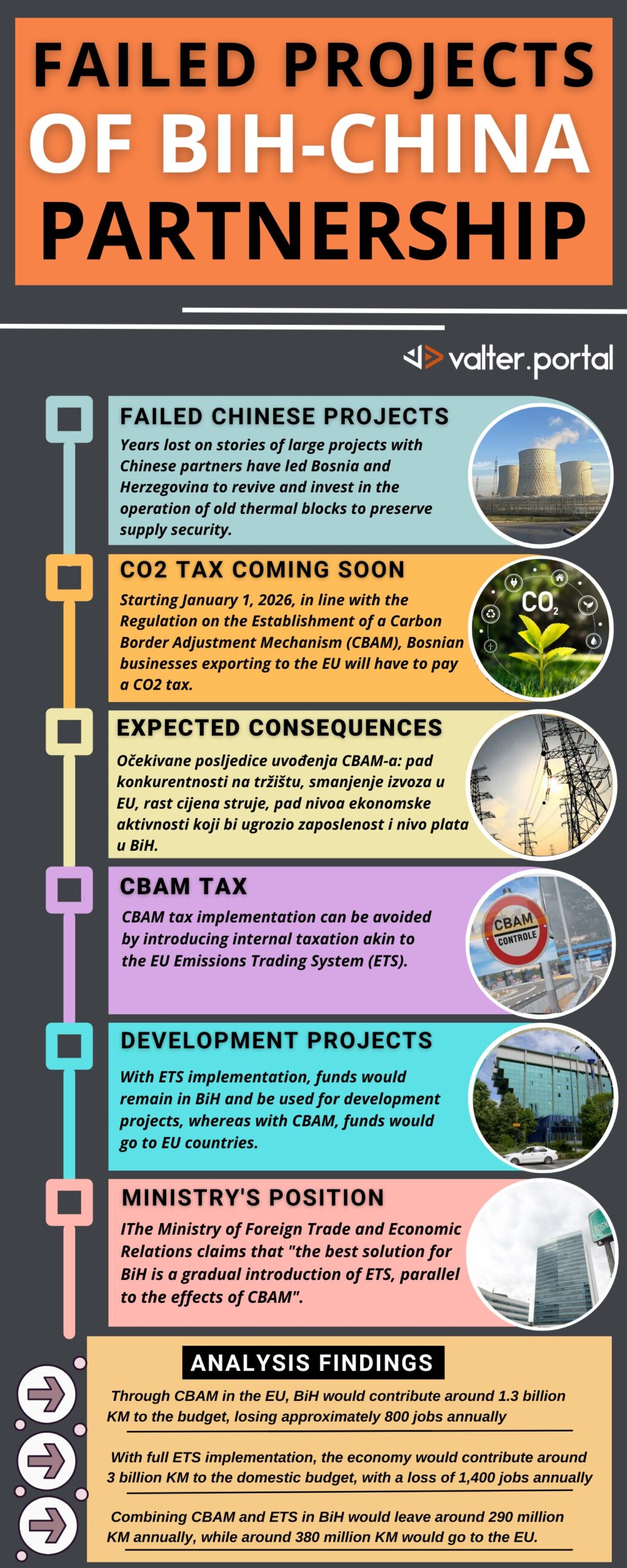
While EPBiH focused on thermal energy projects in the past, Elektroprivreda RS, alongside Gacko 2 and Ugljevik 3, also announced hydroelectric projects like Ulog, Bistrica, and Gornji horizonti, often with Chinese partners.
Kušljugić explains that the cheapest way to produce electricity in BiH today is through solar panels on rooftops. He advocates for empowering local communities, municipal companies, citizens, and businesses to produce for their own needs, facilitating a sustainable energy transition from the bottom up.
“That’s the headline, that’s the story; Block 7 is history, all other blocks are history, thermal power plants and coal are history”, concludes Kušljugić.
However, sub-legal acts enabling citizens and businesses to produce electricity for their own needs and feed surplus energy into the grid are still pending. Kušljugić points out that power utilities do not monopolize; instead, the state, by failing to adopt regulations and creating barriers to grid connection, hinders its economy.
“Politicians do not monopolize, power utilities do not monopolize, and secondly, they favour commercial investors who want to build solar power plants on high and medium voltage to sell to the power utility”, Kušljugić remarks. “We can decentralize to attract foreign companies to build wind, hydro, and solar power plants here, and we have renewable energy sources – that’s not the point. It’s still a monopoly; you just no longer have state-owned companies but foreign companies monopolizing”, he concludes.
The transition should occur in an organized, economically efficient, rational, socially just, and inclusive manner. Special attention is needed for regions most affected by the transition, those predominantly reliant on fossil fuels, the so-called coal regions.
When asked by Valter about people’s awareness of impending job losses, Softić responds that awareness is increasing.
“If you go to Banovići or Tuzla, you’ll see that no one is applying to mining schools anymore”, he concludes.
Miners in BiH are increasingly demanding their rights through street protests, asking whether miners and mines are still needed by the state. Clear answers from officials on these questions are yet to be heard publicly. In line with decarbonization and energy and climate plans, the closure of thermal power plants and mines is expected. The exact timing of this, however, has not been publicly announced.



